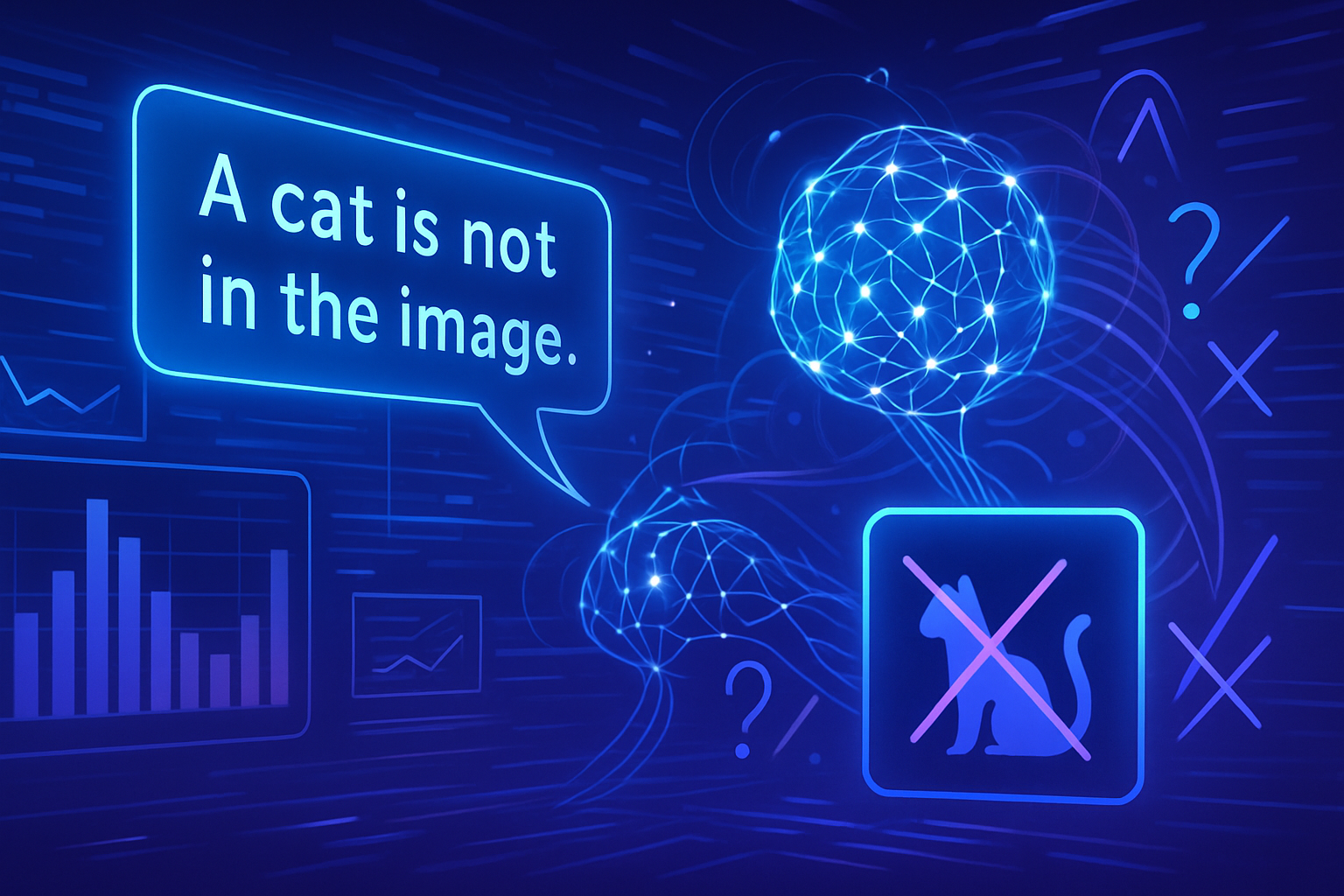The understanding of queries in negation constitutes a major challenge for vision-language models. A recent study highlights the failures of artificial intelligence systems, unable to discern key elements in image captures. These shortcomings, particularly concerning in sensitive areas like health, could lead to erroneous diagnoses. Researchers emphasize the catastrophic consequences of this deficiency in decision-making contexts. The question then arises: how to remedy this anomaly that could compromise the application of these advanced technologies?
Lack of understanding of negation words
A study conducted by researchers at MIT has highlighted the shortcomings of vision-language models (VLM) in detecting negations. VLMs, which combine image and text processing, often fail to accurately interpret queries incorporating terms that determine what is absent, such as “no” or “is not”.
Impact on medical diagnostics
In a medical context, this gap could have significant consequences. Consider the case of a radiologist analyzing a chest X-ray. If the model searches for reports on patients with swelling of tissues, without an enlarged heart, an erroneous diagnosis could result.
When the model associates reports containing contradictory conditions, this leads to biased interpretations. For example, if a patient presents swelling without an enlarged heart, the possible causes may be numerous, complicating the situation.
Performance analysis of models
Research has revealed that VLMs do not effectively identify queries containing negation words. Tests have shown that models perform at levels equivalent to random choices when it comes to queries involving negations.
Features of VLM and affirmation bias
VLMs, which learn using large databases of images and captions, suffer from an affirmation bias. This phenomenon occurs when models overlook negative words, focusing their attention on present objects. They fail to assimilate the notion of absence, rendering their use problematic, especially in critical contexts.
Identification of gaps and proposed improvements
In response to these shortcomings, researchers developed a dataset enriched with captions that include negations. By training VLM on this new base, model effectiveness has significantly improved. Indeed, a 10 percent increase in image retrieval has been observed, along with a 30 percent increase in accuracy of answers to multiple-choice questions.
The goal of these adjustments is to reshape the conventional approach, paving the way for better understanding of queries involving negations. Researchers encourage users to reflect on the specific problems they wish to solve with these models before their deployment.
Consequences in critical environments
Failure to respect the nuances related to negation words could lead to serious implications in areas such as patient treatment or identification of defective products. Researchers are concerned about the risks posed by the indiscriminate use of VLMs, without thorough evaluation of their performances.
Collaboration with experts could prove essential for developing suitable and secure applications. A collective reflection on this subject could lead to significant improvements in the use of vision-language models.
Conclusion and perspectives
The results of this study highlight a necessity to further explore the functionalities of image and text processing models. Research on methods to improve the understanding of negation words becomes paramount to ensure safe and effective use of models in high-stakes contexts.
Frequently asked questions
What is a study on vision-language models and their ability to process negation?
This study aims to assess how vision-language models, designed to analyze images and associated texts, encounter difficulties in processing queries containing negation words, which can affect the accuracy of their results.
Why do vision-language models struggle to understand negation?
Vision-language models are often trained on datasets that do not contain examples of negation, meaning they do not learn to identify terms that specify what is not present in an image.
What are the impacts of negation errors in vision-language models?
Errors related to negation can lead to erroneous diagnoses in medicine or misidentification of defective products in manufacturing processes, potentially causing serious consequences.
How does this study evaluate the capacity of vision-language models regarding negation?
The study uses benchmark tests that include image retrieval tasks and answers to multiple-choice questions, integrating queries with negation terms to measure the performance of the models.
Can vision-language models be improved to better process negation?
Yes, research has shown that recalibrating models with data that include negation words can significantly enhance their accuracy and ability to recognize absent elements in images.
What are some negation words that vision-language models typically misunderstand?
Words like “no,” “not,” and other forms of negation are often not included in the models’ training, rendering them unable to properly process these concepts.
How can I know if a vision-language model is reliable for my application?
It is advisable to test the model on specific examples that include negations before its deployment and to evaluate how it responds to these more complex queries.
What is the importance of processing negation for critical applications?
Proper processing of negation is essential in critical contexts, such as medical diagnostics, where an incorrect interpretation can lead to inappropriate treatment and impact patient health.






